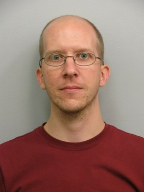
Ted Baltz
Research Areas
Authored Publications
Sort By
Google
OVERVIEW OF C-2W: HIGH TEMPERATURE, STEADY-STATE BEAM-DRIVEN FIELD-REVERSED CONFIGURATION PLASMAS
Ian Langmore
Rob von Behren
TAE
Tom Madams
William D Heavlin
Nuclear Fusion (2021)
Multi-instrument Bayesian reconstruction of plasma shape evolution in C-2W experiment
Erik Trask
Hiroshi Gota
Ian Langmore
Jesus Romero
Rob von Behren
Tom Madams
Physics of Plasmas (2021)
Fusion Plasma Reconstruction
Ian Langmore
Nathan Neibauer
Rob von Behren
(2019)
Application of Bayesian inference for reconstruction of FRC plasma state in C-2W
Erik Trask
Hiroshi Gota
Ian Langmore
Jesus Romero
Matthew Thompson
Tom Madams
Yair Carmon
(2018)
The Plasma Debugger
Erik Granstedt
Erik Trask
Hiroshi Gota
Ian Langmore
Jesus Romero
Matthew Thompson
Roberto Mendoza
Tom Madams
Yair Carmon
(2018)
Achievement of Sustained Net Plasma Heating in a Fusion Experiment with the Optometrist Algorithm
E. Trask
M. Binderbauer
H. Gota
R. Mendoza
P.F. Riley
Scientific Reports, 7 (2017), pp. 6425
